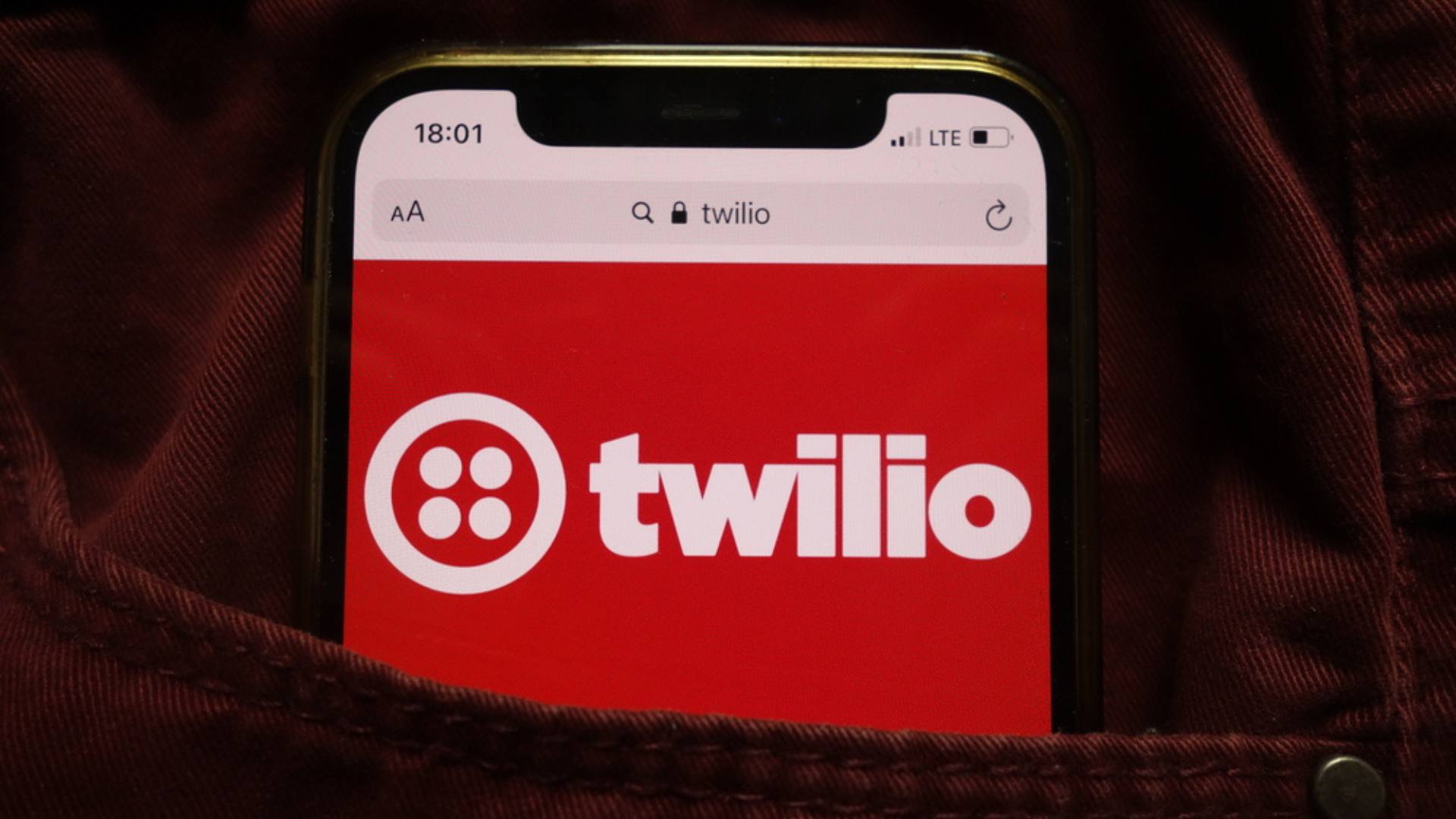The News: Twilio posted strong first quarter (Q1) 2024 results, with total revenue rising 4% year-over-year (YoY) to $1.05 billion, driven by growth in its communications business and stabilization of its Twilio segment CDP business. The company posted a record quarter of non-generally accepted accounting principles (non-GAAP) gross profit of $566 million, a 54% YoY increase, and another strong quarter of free cash flow of $177 million.
You can read the full earnings press release on the Twilio website.
By the Numbers:
- Twilio Q1 2024 revenue was up 4% YoY to reach $1.05 billion, exceeding management’s guidance of $1.025 billion to $1.035 billion
- Twilio Q1 2024 non-GAAP income from operations was $159.6 million, compared with non-GAAP income from operations of $103.8 million for Q1 2023
- Non-GAAP diluted earnings per share (EPS) of $0.80 versus analyst estimates of $0.59
- Communications revenue of $972.0 million for Q1 2024, up 4% YoY
- Segment revenue reached $75.0 million for Q1 2024, up 2% YoY
- As of the end of Q1 2024, Twilio had more than 313,000 active customer accounts, compared with 300,000 active customer accounts at the end of Q1 2023
Guidance for Q2 2024:
- Total revenue in the range of $1.050 billion to $1.060 billion, up 1%-2% YoY
- Non-GAAP income from operations in the range of $135 million to $145 million
- Non-GAAP diluted EPS in the range of $0.64-$0.68
Guidance for Full Year 2024:
- Organic revenue growth of 5%-10%
- Non-GAAP income from operations of $585 million to $635 million
Twilio Beats Guidance, Posts Strong Q1 2024 Results
Analyst Take: Twilio announced Q1 2024 revenue that exceeded management’s guidance for the quarter, as well as posting a non-GAAP EPS figure that beat the analysts’ consensus estimate. For the quarter ended March 31, 2024, Twilio posted revenue of $1.047 billion, up 4% reported and 7% organically YoY, along with Communications revenue of $972 million, up 4% reported and 7% organically YoY.
The beleaguered Segment division also saw revenue rise to $75 million, up 2% YoY, though the figure was affected by cryptocurrency headwinds that the company has mentioned over the past few quarters as well as the sunsetting of the software component of the Zipwhip business. These two elements represented a combined 210-basis-point headwind to the company’s organic revenue growth in Q1. According to Twilio management, excluding these items, consolidated Q1 organic revenue growth was 9%, and Communications organic revenue growth was 10% YoY.
On the earnings conference call with analysts, Twilio management said that it does not expect a material negative impact to revenue growth from these crypto customers moving forward but does continue to expect modest headwinds of about 100 basis points in Q2, and 80 basis points for the full year, due to sunsetting the software component of its Zipwhip business
Embedding AI and Data into Communications and Flex
Twilio noted that the company’s communications business remains strong, with organic growth in the quarter of 7%, with this segment contributing 93% of the company’s overall revenue. Management highlighted positive activity in the quarter, including wins with China Unicom and Bloomreach and the deepening of relationships with its network of ISVs and global partners. This should allow more self-service and cross-sell momentum, helping to drive sales while moderating selling costs.
Most notably, the company says it is making progress with integrating AI into its products, highlighting the Q1 announcement of Agent Copilot, the first of three planned new product launches for 2024 that will involve the native embedding of its Segment CDP product within Twilio’s communications products.
With Agent Copilot, Twilio has embedded unified profiles that are powered by Segment within Flex, the company’s digital engagement platform, with the aim of providing agents deeper insights into their customers’ behaviors and preferences and enabling Copilot to provide intelligent routing and insights during each customer interaction. The goal is to enhance productivity while reducing interaction resolution times.
Twilio also noted that its customers are starting to realize benefits from other AI innovations, including voice intelligence, which enables voice transcriptions of call records to trigger an action based on any keyword, allowing for better personalized communications, as well as identify signals that indicate customer intentions, such as an intention to churn.
The incorporation of these new AI-powered tools designed to address the hurdles around agent efficiency and productivity are increasingly becoming table stakes for any customer experience, communication, and engagement platform.
Refocusing on Driving Profitability with Segment
Twilio has received a significant amount of pressure from activist investors, largely around its Segment CDP business. Late last year, these investors suggested that Twilio should divest this unit, as it was not operating profitably nor contributing a significant percentage of the company’s overall revenue.
In response, Twilio implemented a full operational review of Segment, which concluded during Q1 2024. The company is now focused on executing on its plan to drive more strategic product innovation, embedding Segment’s capabilities into its communications products, and driving the business unit to break even on a non-GAAP operating income basis by Q2 2025. According to the company, in the month following the review, Twilio has made progress in these areas and has deepened partnerships with Databricks and Snowflake to enable bidirectional data integrations to allow customers to seamlessly ingest and activate data.
Ultimately, Twilio must demonstrate continued momentum around the implementation of AI and other tools to drive increasing use of Segment, not only as an integrated component into its Voice products but also as a powerful, standalone CDP product. The company’s announcements of integrations with other large data companies are a sign that Twilio is taking the challenge seriously, given that most larger enterprises hold data in a variety of cloud data platforms and require a CDP that can seamlessly interact with that data wherever it is.
As Twilio has mentioned in the past, the company’s key strength is being able to leverage the customer data it collects and holds within Segment and allowing customers to act upon and activate that data through its Flex (or other third-party engagement platform) and its voice products. Without Segment, Twilio is not able to provide organizations with as much value and is less likely to attract and retain large enterprise customers.
Looking Ahead
Twilio is generating momentum, as evidenced by its strong customer growth figures in Q1, along with improvement in gross margin and improving free cash flow. As such, Twilio management issued revised Q2 2024 revenue guidance of $1.050 billion to $1.060 billion, reflecting growth of 1%-2% YoY; non-GAAP income from operations in the range of $135 million to $145 million; and non-GAAP diluted EPS in the range of $0.64-$0.68. For the full year FY 2024, Twilio expects organic revenue growth of 5%-10% and non-GAAP income from operations of $585 million to $635 million.
The company has implemented significant changes, particularly at the executive level. Khozema Shipchandler was instituted as the new CEO late last year, replacing founder Jeff Lawson, and Shipchandler recently announced the appointments of Inbal Shani as its new chief product officer for Twilio Communications, and Thomas Wyatt as the new president of Segment. Just prior to the earnings announcement, the company announced Chris Keller as the firm’s new chief marketing officer.
Ultimately, Twilio needs to continue to execute on its plans, particularly around embedding Segment into its voice communications products to demonstrate the CDP’s capabilities. The company also needs to drive its messaging around Segment as a must-have tool to enable greater personalization, and the effective use of generative AI, which requires that company and customer data be properly cleaned, segmented, labeled, and governed, so it can ground these AI models and provide fast, accurate, and actionable insights to customers.
Disclosure: The Futurum Group is a research and advisory firm that engages or has engaged in research, analysis, and advisory services with many technology companies, including those mentioned in this article. The author does not hold any equity positions with any company mentioned in this article.
Analysis and opinions expressed herein are specific to the analyst individually and data and other information that might have been provided for validation, not those of The Futurum Group as a whole.
Other Insights from The Futurum Group:
Twilio Launches Unified Profiles and Agent Copilot
Twilio Remains Committed to Segment, Despite External Pressure
Twilio Q4 2023 Revenue Grows 5% YoY, Beating Targets








